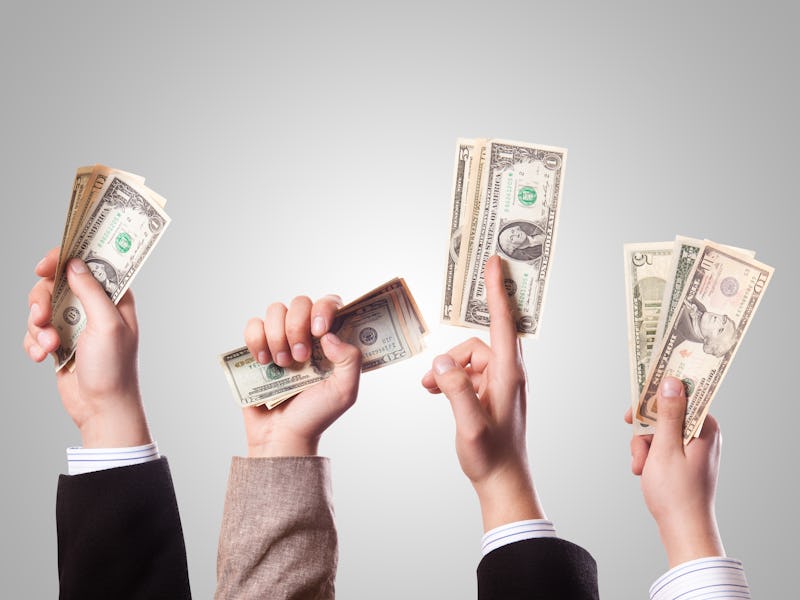The Strange Reason People Think Prices Are Cheaper When They End in $0.99
It has to do with the way you read numbers.

People are filled with psychological quirks that make us more or less willing to part with money in certain circumstances. One of the most common is the use of nine-ending prices to create the impression that something is a bargain, for example by charging $2.99 instead of $3.00. Retailers have been pulling the nine-ending prices trick for so long, even academics who have studied it aren’t precisely sure where it comes from.
“It probably started with some really shrewd retailers a long, long time ago,” Lingjiang Lora Tu, a professor of marketing at Baylor University’s Hankamer School of Business, told Inverse. “And the majority of the research on nine-ending prices shows that the strategy works … It generates revenue and increases sales.”
But interestingly enough, Tu explained that nine-ending prices aren’t effective everywhere, according to her new study. Tu’s research suggests this discrepancy arises from two different modes of thinking — analytical and holistic — and how these types of thinkers process numeric information like prices.
“Analytic thinkers tend to process the price information digit by digit, with the last digit as the most important,” Tu explained. “They tend to pay more attention to the most important, the focal information, and disregard the background information. This has been shown again and again. Holistic thinkers tend to think everything is connected.”
When you’re looking at something digit by digit, you think more about the last thing you read — that deal-signaling nine — which makes the item you’re thinking about buying as being significantly cheaper than you would if the number was rounded up. This effect is stronger when we’re tired or in a rush (see: every gas station pump ever), and is also stronger for people with a more individualistic mindset.
So how can we use insights like this to our advantage? For one, if we’re susceptible to nine-ending prices Tu said her research makes a case for keeping around more family photos.
Looking at family photos may prime us to think about numbers more holistically.
Save Money With Framed Photos of Loved Ones
The reason the presence of family pictures can influence our spending decisions, Tu explained, is because family pictures help prime us to think about ourselves as part of a whole.
“If you remind yourself to think of the big picture, or think about how you might use the product with a loved one or friend, that reminds you that you’re not alone, that you’re connected to everyone else,” Tu said. “That will prime you to think more holistically.”
Pictures of loved ones have other benefits too. In fact, one study from researchers at Stanford found that people who had just looked at pictures of their romantic partners were less likely to experience physical pain. These pictures, they found, cause higher amounts of brain activity in the regions that process rewards.
Tu also said that the inverse is true, and that brands sometimes prime us to think analytically by encouraging us to have a more individualistic mindset. Retailers seeking to prime us to think analytically, for example, will emphasize the self, as was the case with Dr. Pepper’s famous “one of a kind” campaign or Burger King’s “have it your way” ads. According to Tu’s research, these types of messages can prime us to read numeric information digit by digit, for better or worse.
It’s important to note that marketers obviously don’t always know whether a given consumer is going to be holistically minded or not, and even in cultures that tend to encourage individuality still produce holistic thinkers. But if we’re already susceptible to these effects, or if we’re in a rush, it might be worth taking an extra beat to think about the bigger picture before pulling the trigger on an online purchase, whether that involves a family picture or not.